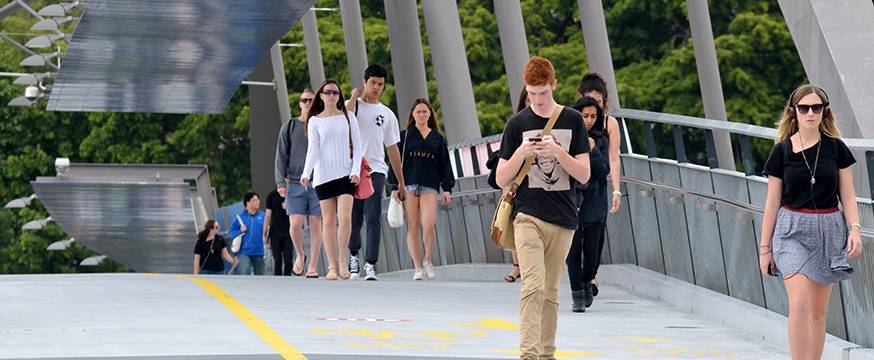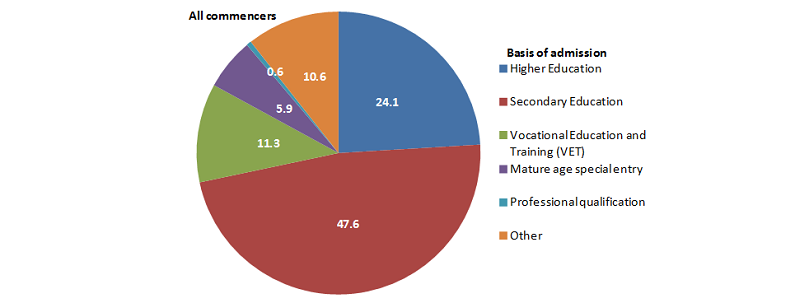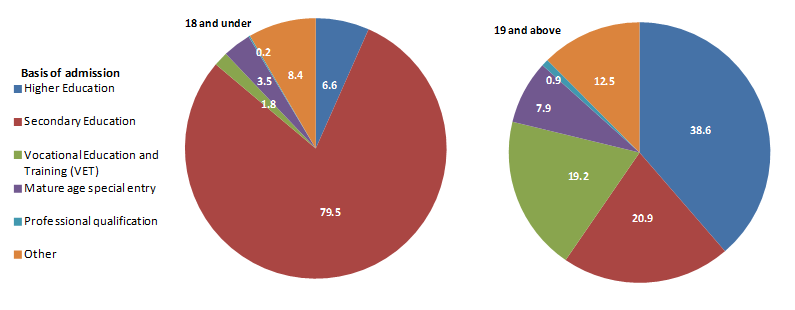
Pathways to university: Beyond prior school achievement
Research 16 Feb 2015 6 minute readDaniel Edwards explores whether Australia’s university admissions pathways adequately meet the needs of students and society.
The rapid growth in student numbers in Australian universities over recent years has given rise to debate as to whether expansion is resulting in a compromise in quality.
In recent years, the focus of the ‘quality’ debate has been on the relative Australian Tertiary Admissions Rank (ATAR) of entrants, and while it is true that expansion has resulted in slight reductions in entry cut-off points for university, more evidence is required to understand the extent to which this has had an influence on the quality or outcomes of students in higher education.
As universities expand and widen their student intake, there is a need to revisit admissions policies and processes to move away from a fixation on ATAR, recognise that vast numbers of students access universities by alternative means, and begin to develop better understanding of the best measures for selecting students, taking into account student contexts as well as course and institutional contexts.
Traditions in university admissions
In the 1950, ’60s and early ’70s, the only pathway to university was through school ‘matriculation’. With fewer than 10 per cent of school students matriculating in the 1950s, selection processes occurred during the school years rather than at the point of entry to university.
By the late 1980s, school completion rates had grown to nearly 60 per cent and the need for universities to be more pro-active in their admission and selection policies led to the use of grades and aggregated scores based on school results for university entry.
Since then, the introduction of demand-driven funding in 2009 has resulted in a huge expansion in student numbers, with Census data showing a 25 per cent increase in enrolments between 2006 and 2011 – the largest period of growth in the past 20 years. This influx has led to further change in the profile of university students.
In 2011, approximately 310 000 students commenced their undergraduate studies. Of these:
- 56 per cent were female
- around 27 per cent were international students
- 19 per cent resided outside a state or territory capital, and
- nearly 17 per cent were from low socioeconomic status (SES) backgrounds.
The ages of undergraduate commencers in Australia span a wide range compared with many other countries. In 2011 the average age of all university students was 26 years and 11 months.
Current admission pathways
Given the relative diversity of the Australian higher education student population, it is unsurprising that there are various pathways to university entry.
Figure 1 displays the distribution of pathways taken by commencing higher education students in 2011.

Figure 1: Basis of admission in 2011, domestic Australian students
Among Australian students commencing university in 2011, almost half (47.6 per cent) were selected on the basis of outcomes in the final year of secondary school, a further 24 per cent gained entry on the basis of a prior higher education studies and 11 per cent were admitted based on prior vocational education and training (VET) studies. A further 11 per cent were selected by ‘other’ means, such as an interview, aptitude test or folio, while six per cent gained entry based on specific measures for mature-aged candidates.
The picture changes, however, when the commencing student population is broken down into two age groups: those aged 18 and under and those aged 19 and above.
Figure 2 provides an illustration of the important differences in the role of admissions depending on the age cohort of entrants.

Figure 2: Basis of admission in 2011, domestic Australian students by age
Nearly four of every five students aged 18 and under are selected for university on the basis of achievement in secondary education, compared to one in every five students from the older cohort.
Pathways to inequity
One of the issues in the selection of students on the basis of school achievement alone is that it can result in selection bias related to resources available to students through their schools or home.
Numerous studies have found that students from high SES backgrounds tend to perform better in the final year of schooling in Australia. As a result, there are higher concentrations of students from high SES backgrounds enrolled in university in Australia.
In 2011, 36 per cent of all commencing students entering university based on their ATAR were from the top quarter of the population as measured by SES. Those from the bottom quarter of the population by SES only made up 15 per cent of commencers who entered university on the basis of their ATAR.
While the larger representation of students from high SES backgrounds is also apparent through other admissions pathways, the unevenness is not as profound. For instance, 23 per cent of commencers using a VET course credit and 24 per cent of those entering based on mature-age selection criteria in 2011 were from low SES backgrounds.
Alternative admission pathways
Despite the recent substantial growth in the number of students being selected for university, very little has changed in relation to the admissions practices and pathways to university entry in Australia.
Australian universities would benefit from expanding admissions policies to include greater use of multiple measures for selecting applicants into university, in order to make more evidence-based decisions about the quality of the students they select.
For example, pilot testing of the use of an aptitude test alongside school achievement in Australian universities has suggested that there are benefits to a multi-tool selection policy in terms of improving the diversity of student intake without necessarily compromising retention or progression rates.
Exploring admissions and selection policies further is paramount to ensuring that there is confidence in the system, that students are entering universities with a good prospect of success and that the growth in the system is sustainable and likely to result in boosting the credentials of the country as a ‘knowledge economy’.
Further information:
This article is based on the book chapter ‘University Admissions in Australia: Multiple Pathways to the Same Destination’, by Daniel Edwards, published in International Perspectives on Higher Education Admission Policy.
